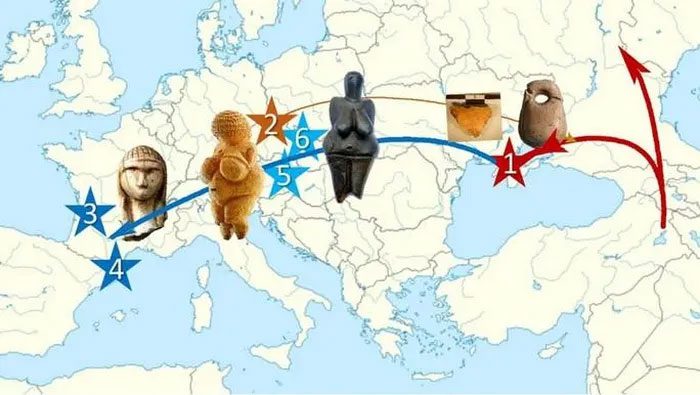DNA from the remains of two ancient individuals excavated at the Buran-Kaya III site on the Crimean Peninsula could prompt scientists to rewrite a significant chapter in the history of human migration and evolution.
This research was recently published by an international team from various institutions in France, the National Academy of Sciences of Ukraine, and the Chinese Academy of Sciences in the journal Nature Ecology and Evolution.
The valuable ancient DNA samples, dating from 36,000 to 37,000 years ago, indicate that the Crimean Peninsula was indeed the first settlement of humans in Europe.

The path of European civilization may originate from Buran-Kaya III (1) in Ukraine – (Photo: NATURE ECOLOGY AND EVOLUTION).
According to a timeline established by previous studies, some groups of Homo sapiens migrated out of Africa approximately 60,000 years ago; however, most lived a nomadic lifestyle without settling anywhere.
Simultaneously, around 40,000 years ago, a supervolcano in southern Italy wiped out most Homo sapiens as well as their Neanderthal relatives in Europe.
Consequently, the ancestors of modern Europeans are from a different group. French, Ukrainian, and Chinese scientists reveal that they came from Crimea.
The Buran-Kaya III site has long been renowned for evidence related to humans from 50,000 years ago. However, the most notable layers of sediment date back 34,000 to 38,000 years and contain numerous stone tools and intricately carved bones, similar to the Gravettian culture that spread across Europe 33,000 years ago.
This connects the ancient Buran-Kaya people with the long-established Gravettian civilization, indicating that they are the ancestors of these ancient Europeans.
The research team, led by paleo-geneticists Eva-Maria Geigl and Thierry Grange from the French National Centre for Scientific Research (CNRS), sequenced the genomes of two male individuals from Buran-Kaya III and compared them with European genomes.
The results showed remarkable similarities between the Buran-Kaya III individuals and more recent Europeans, rather than with groups existing before the supervolcano disaster.
This confirms that the ancestors of Europeans were indeed the community of the two Buran-Kaya III individuals. This site is now recognized as the oldest human settlement identified in Europe.
These new findings could necessitate a revision of human migration and evolutionary history. According to popular maps, the majority of humans in Europe are believed to have originated from a migration wave from Africa, traversing through the Middle East and gradually moving upward, while another branch conquered Asia.
However, recent discoveries increasingly indicate that our ancestral history is much more complex, featuring intricate and winding migration routes. Additionally, there were encounters among communities of the same and different species, where diverse bloodlines intertwined multiple times and in various ways before giving rise to humanity as we know it today.


















































